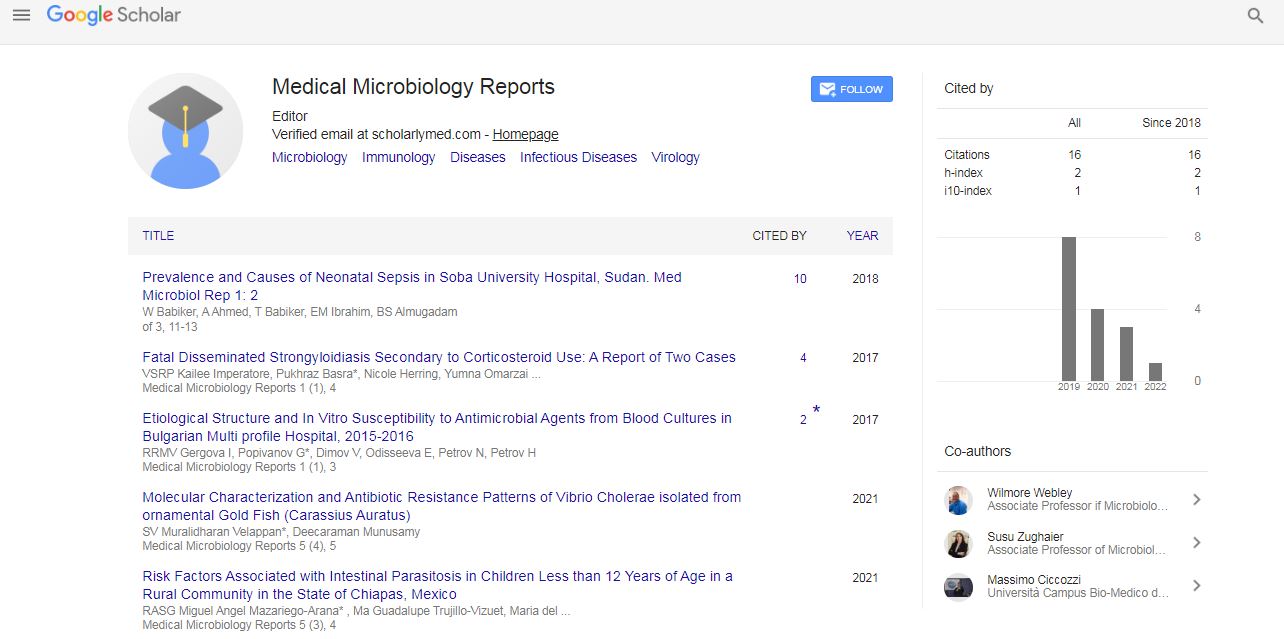Use of the antibiotic finafloxacin for the treatment of infections caused by biological threat agents
Sarah Harding
Defence Science and Technology Laboratory, UK
: Med Microbiol Rep
Abstract
Statement of the Problem: Antimicrobial resistance is a global problem causing concern in the clinical environment where urinary tract, intra-abdominal, skin and respiratory tract infections are becoming difficult to treat with the currently available antibiotics, in particular the fluoroquinolones. New antibiotics are required to treat such infections in addition to those caused by the biological threat agents. These pathogens reside in intracellular niches making it difficult for antibiotics to penetrate and remain active. Methodology & Theoretical Orientation: Finafloxacin is a novel C-8-cyano-fluoroquinolone under development by MerLion Pharmaceuticals that has been chemically manipulated to improve its antibacterial activity under acidic conditions, where other fluoroquinolones, including ciprofloxacin, are less activated. It has good antimicrobial activity against a wide range of bacterial species including MDR Gram-negative pathogens, has shown to be safe in Phase I and II clinical trials and to be more effective than ciprofloxacin in treating complicated urinary tract infections and pyelonephritis. Findings: Finafloxacin has demonstrated activity in vitro when evaluated against Burkholderia pseudomallei, Francisella tularensis, Yersinia pestis and Coxiella burnetii. It has also offered high levels of protection against B. pseudomallei and F. tularensis when evaluated in murine models of infection. Conclusion & Significance: This study demonstrates the benefit of evaluating novel antibiotics (shown to be active against MDR Gram negative organisms) against intracellular pathogens such as B. pseudomallei. Follow on studies are warranted to further investigate the utility of finafloxacin for the treatment of infections caused by these biological agents.
Biography
I work for the Defence Science and Technology Laboratory (Dstl) in the CBR Division, where I technically lead a number of projects within the Antimicrobials area of the Microbiology and Biological Detection group. The aim of this area is to identify and evaluate compounds that have broad spectrum efficacy, both In vitro and In vivo. These range from novel compounds under development to commercial off the shelf products and are made available to us through collaboration with academia and industry, both nationally and internationally.
E-mail: svharding@dstl.gov.uk
 Spanish
Spanish  Chinese
Chinese  Russian
Russian  German
German  French
French  Japanese
Japanese  Portuguese
Portuguese  Hindi
Hindi 
